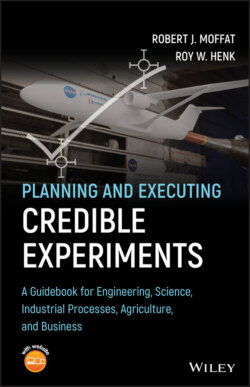Читать книгу Planning and Executing Credible Experiments - Robert J. Moffat - Страница 67
4.7 Specify the Allowable Uncertainty
ОглавлениеThe third point that should be dealt with is uncertainty. How much uncertainty can be tolerated in the answer to the motivating question?
For most heat‐transfer situations, an uncertainty of ±5% is “Olympic‐quality” data. Much of our present heat‐transfer understanding was developed from historic and legacy databases with ±20% uncertainty. Often, the client already has some data or has a design approach that works reasonably well but wants to reduce the uncertainty. In such a situation, to produce more data with the same uncertainty as the existing dataset will not advance the art, nor will it satisfy the client.
The allowable uncertainty should be described in a manner consistent with current conventions. For most engineering work, the uncertainty is specified at the 95% confidence level and presumes a symmetric probability distribution, centered around zero error. For example, if the uncertainty is quoted as ±10% at the 95% confidence level, this means that 19 of 20 repeated trials of the same measurement act will yield a value within ±10% of the quoted value. The possible error is, by agreement, equally likely to be positive or negative.
In some cases, the client may wish to specify a “one‐sided” tolerance, for example to demonstrate that a product is better than its competition. A one‐sided test must be selected before the experiment is run. The one‐sided test must be clearly indicated in the report so that the results can be interpreted accurately in terms of the one‐sided error allowance. Otherwise, the experiment will be reckoned as a two‐sided or “zero‐centered” test.
